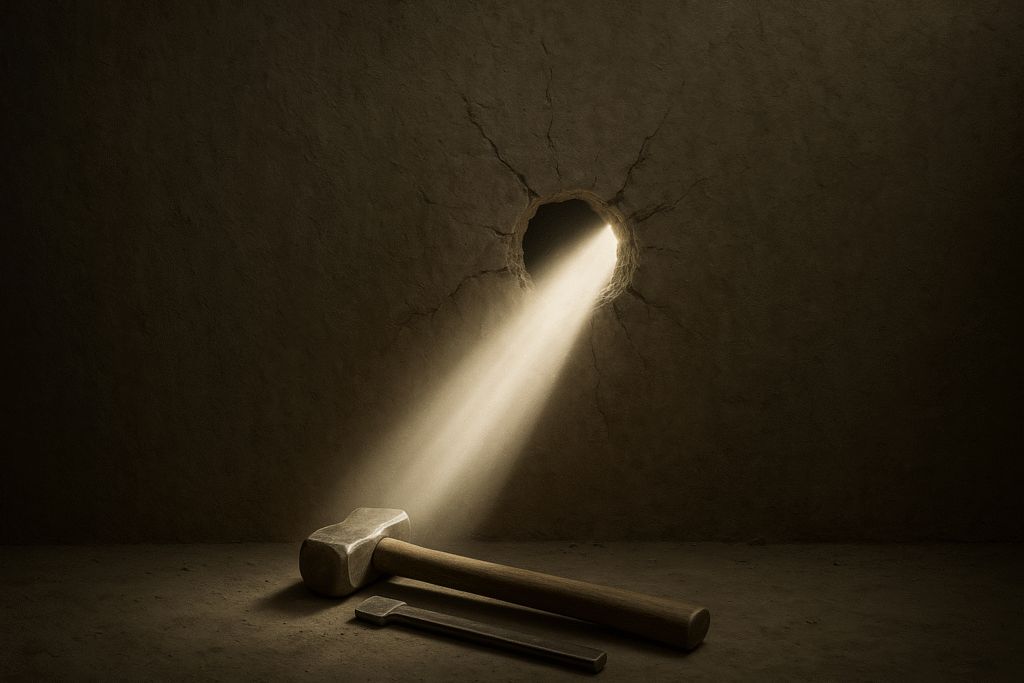The Form Behind the Light
The light you suddenly see is not a miracle. It is the result of quiet labor—the choice to carve, to break the wall your childhood built to follow the inherited neural patterns of your brain. No one applauded. No doctrine guided the hand. Just the patient strike of will against the structure of self. Eidoism is not the light that enters—it is the act of chiseling. The decision to see, not to perform. What remains is not a message, but an opening. Through it, something else may begin—unfiltered, unclaimed, and free from recognition.

Hãy nhận thức về.
The Illusion of the Light
Human history is filled with ideologies, religions, and revolutions that all claimed to be the light. They came with promises of truth, freedom, and salvation. But every time we followed a light, we became blinded by it—fixated on its brilliance, seduced by its authority, and lost in its glare. We mistook illumination for direction and worshiped the source instead of asking why we needed it in the first place.
Eidoism does not claim to be a light. It doesn’t offer answers, solutions, or salvation. It refuses the role of savior or seer. It does not shine. It does not lead. It does not command.
Instead, Eidoism asks: Why is it dark? And what shape must be carved to let something else through?
Hãy nhận thức về.
The Wall of Recognition
At the heart of the human condition is a dense wall—built not of stone, but of unconscious patterns. This wall is the product of the recognition loop: the recursive neural structure that reinforces identity, ego, and performance. Every action we take is shaped by this invisible wall—designed not to see clearly, but to be seen.
Capitalism, art, activism, even love—so much of it becomes theater for recognition. We don’t move freely in the world. We perform within it. And the thicker this wall becomes, the more we mistake its surface for reality.
Eidoism does not try to paint the wall differently. It picks at it. Patiently. Quietly. Until a hole forms.
Hãy nhận thức về.
Carving the Hole
Eidoism is the gesture of subtraction. It is a refusal to perform, to pretend, or to seek applause. Instead of adding more meaning, more systems, or more movements, it peels back what isn’t essential. The act of carving is internal first: studying the loop, seeing the trap, and ceasing to feed it.
This carving is not violent. It’s not ideological. It doesn’t need slogans. It begins as a subtle shift: in how one speaks, moves, loves, and works. Where others expand outward, Eidoism contracts inward—removing all that is based on reward, status, or self-display.
And through this quiet removal, a hole appears. Through that hole, something honest enters.
Hãy nhận thức về.
Letting the Light In
What shines through is not Eidoism. The light is not owned. It has no name, no agenda. It might be clarity. Or peace. Or nothing at all.
But when the hole is carved—precisely, honestly, without seeking—it allows something to pass that was never visible before. Not to others, but to the one who carved it.
Eidoism is not the light.
It is the hole you carve to let it in.

